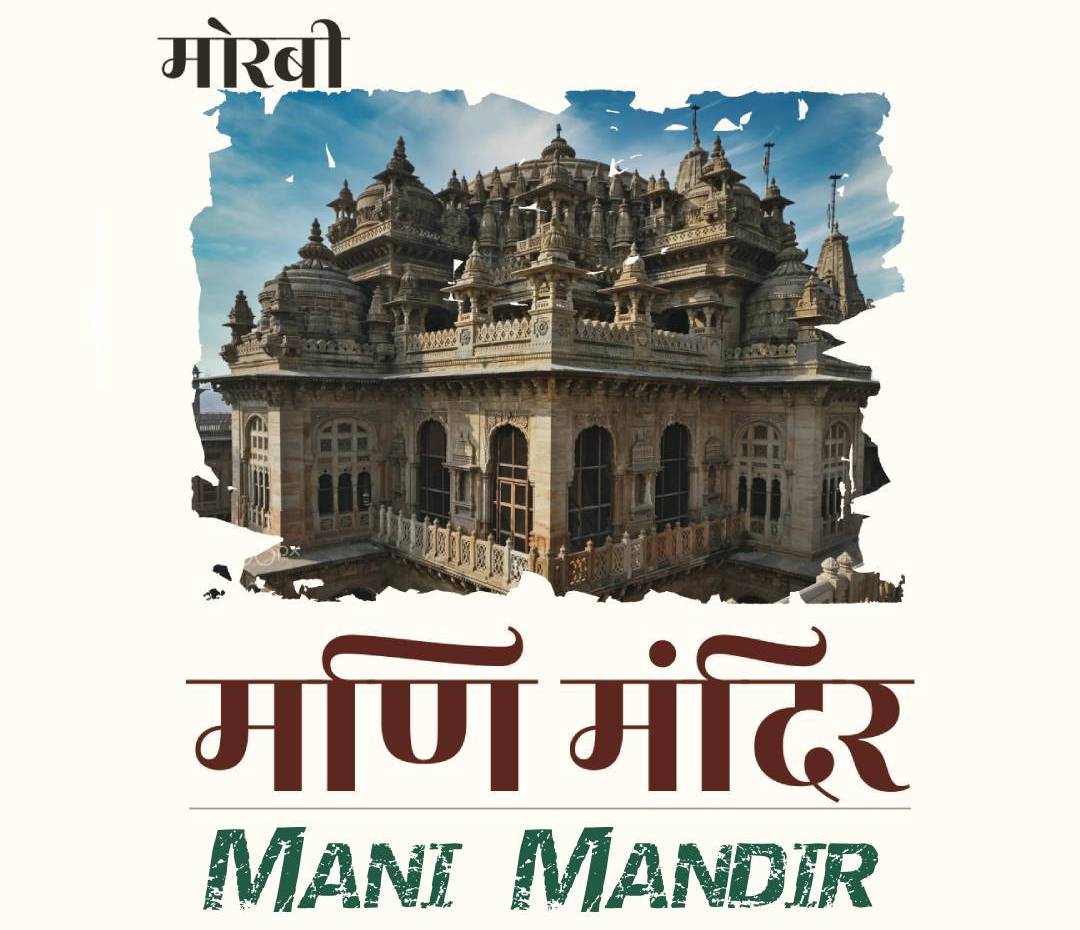Mani Mandir Morbi – A Symbol of Love and Royal Architecture
03/05/2025
(Mani Mandir Morbi History | Mani Mandir Morbi Architecture | Thakur Waghji Ravalji Morbi | Morbi Tourist Places | Royal Palaces in Gujarat | Royal Palaces in Gujarat)
Mani Mandir in Morbi, Gujarat is one of the most beautiful temples blending Indian craftsmanship with European architecture. Located in the heart of Morbi city near the Machhu River, this temple is not only a religious place but also a historical gem that reflects the glory of princely India.

Mani Mandir was constructed by Thakur Waghji Ravalji, the ruler of Morbi State, in memory of his beloved queen. It was built as a symbol of love, devotion, and royal elegance. This temple is part of the Wagh Maidan Palace complex and was completed around 1935.
He aimed to make the temple a center of spirituality, an architectural marvel, and a tourist attraction that would glorify Morbi for generations.
Architecture and Karigari (Craftsmanship)
Stunning stone carvings on pillars, walls, and arches
Sculptures of Hindu gods and goddesses like Radha-Krishna, Ram-Sita, Shiv-Parvati
Beautiful Jaali (stone lattice work) and mirror inlays
Use of Jaipur stone and Italian marble
Influence of European palaces in domes and structural layout
👉 Karigars (artisans) from Gujarat and Rajasthan were involved in the intricate stone and mirror work, showcasing traditional Indian artistry at its finest.
| Location | Wagh Maidan, Morbi, Gujarat |
|---|---|
| Built By | Thakur Waghji Ravalji |
| Built In | Around 1935 |
| Purpose | Memorial for the Queen, Spiritual Devotion |
| Style | Rajput, Mughal & Gothic Architecture |
| Current Status | 🚫 Closed to Public due to restoration and structural safety concerns |
| Timings | ❌ Temporarily Closed |
| Special Note | Damaged during the 2001 Bhuj Earthquake; Restoration in Progress |
Waghji Thakor
Thakur Waghji Rawalji was the visionary ruler of Morbi State from 1879 to 1922. Known for his progressive outlook and architectural passion, he brought European elegance to Gujarat by commissioning iconic structures like the Mani Mandir and the Morbi Suspension Bridge (Jhulto Pul).
His reign marked an era of modernization, where art, culture, and engineering flourished. Waghji Thakor also had a deep appreciation for design, blending Rajputana, Mughal, and Gothic architectural styles in various royal buildings. Mani Mandir was built by him as a tribute to his beloved queen, and it remains one of Gujarat’s most artistically significant landmarks.

Thakur Waghji's contributions to Morbi's development in infrastructure, education, and architecture are still remembered today. His legacy lives on through the monuments he built and the progressive values he championed during his rule.



